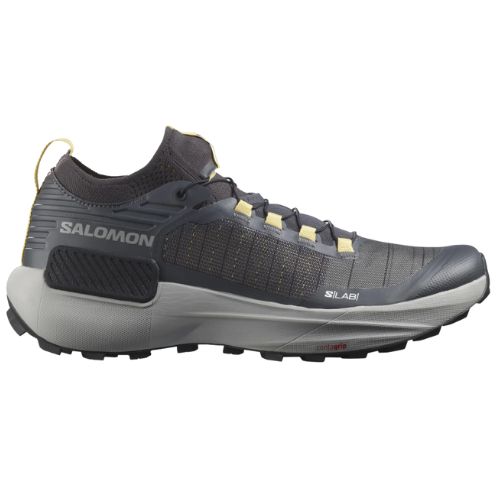The drop a shoe is the difference in height in the midsole area, more specifically, between the heel and the front of the shoe, where the metatarsals are located. In more technical terms, it is the difference in height, measured internally and expressed in millimeters, between the rearfoot and forefoot regions.
You may be interested in What is the drop?
Currently, there is an extensive catalog of Running shoes and trail running Running shoes on the market with very different drops, ranging from 0 millimeters in a minimalist or barefoot shoe to 12 millimeters in a shoe designed for daily training.
Broadly speaking, we could point out that the higher the drop of a shoe (above 8 mm) implies a landing during the stride with the heel part, while a shoe with a low drop (below 8 mm) favors support in the forefoot area.
You may be interested in:
Drop between 8 and 12 mm
Many of the running shoes on the market today have a drop of this type, which we could consider as intermediate and which is usually between 8 and 10 millimeters. Generally, shoes with this high drop are used by runners for training, or for running long distances such as marathons at slow paces.
The advantage of wearing shoes with a drop of between 8 and 12 millimeters lies in greater cushioning and stability during the stride. In general, this type of shoe is somewhat heavier than the rest due to the materials and compounds that integrate the heel and midsole, favoring the support or landing of the foot with the rear part.
Drop between 4 and 6 mm
As we have already mentioned above, a drop below 8 mm favors the landing of the foot with the forefoot or metatarsal area. A shoe with a drop of these characteristics contributes to a more natural stride, favors the transition in the stride and provides greater stability on uneven surfaces, as can be the case in trail running.
Drop between 0 and 4 mm
Shoes that have this little or no drop are considered minimalist or barefoot, the closest thing to running barefoot or with the minimum. Its main features are its non-existent cushioning, extreme lightness thanks to the little material used for its construction and, finally, a more natural and efficient footprint. You can read here the interview made in Vamos a Correr to Santiago Ruiz, precursor of barefoot in Spain.
Conclusion
There are several factors that will condition the choice of a running shoe with a higher or lowerdrop:
- The purpose for which we are going to use it training with long runs or if on the contrary will be to compete.
- Depending on the modality or discipline you practice, you will run on hard surfaces such as asphalt or on uneven terrain, so typical of trail running.
- Another aspect to take into account is whether you have a good running technique with support in the forefoot or if, on the contrary, you lack it and run on heels.
- It will also influence the fact of being prone to certain types of injuries in certain parts of your lower body and, consequently, it may be more convenient one or another drop.
Read more news about: Running Training




















